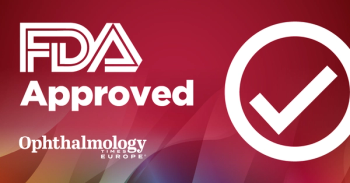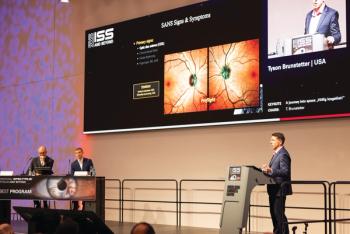
Treating corneal neovascularisation with an anti-VEGF
Can topical bevacizumab be used to treat corneal neovascularisation.
Key Points
Several medical therapies including lubrication, non-steroidal anti-inflammatory medications, and corticosteroids have been used in an attempt to prevent progression of corneal NV with limited effect.7 Surgical therapies such as laser photocoagulation, diathermy and cauterisation of the vessels have also been shown to have positive but have had limited effect at regressing vessel growth.8-10 However, new VEGF specific inhibitors have had very encouraging results in the treatment of neoplasia and more recently NV of the choroid and retina.
Bevacizumab (Avastin; Genentech, San Francisco, CA) is a humanised monoclonal antibody that binds and neutralises all human VEGF-A isoforms. It has already been approved by the US Food and Drug Administration (FDA) for the treatment of colon11-12 cancer and has been reported to be effective in the treatment of choroidal, retinal, and iris neovascularisation from macular degeneration and diabetic retinopathy.13-15 It has also been proven safe for intracameral injection as adjunctive treatment of neovascular glaucoma.16
Study design & patient profiles
Our study was designed as an interventional case series and was approved by the Independent Review Board committee of Duke University. The off-label and compassionate use of bevacizumab as well as the potential risks, benefits and side effects of this medication were discussed extensively with each patient and their informed consent was obtained.
Both patients were treated topically four times a day for 25 days. Each patient was examined at 3 days, 1 and 2 weeks, and 25 days. Superficial and deep stromal corneal NV was markedly reduced in Patient 1 (Figure 1B) and to a lesser degree in Patient 2 (Figure 2B). Systemic blood pressure remained at baseline level during the treatment period in both patients. No adverse ocular effects, such as conjunctivitis, increased epitheliopathy, conjunctival hyperemia, increased scarring, periocular changes, or burning on instillation, were noted. Patient 1 was followed for 9 months post-topical treatment and the corneal NV level returned, but to a level lower than pre-treatment baseline (Figure 3).
Newsletter
Get the essential updates shaping the future of pharma manufacturing and compliance—subscribe today to Pharmaceutical Technology and never miss a breakthrough.














































